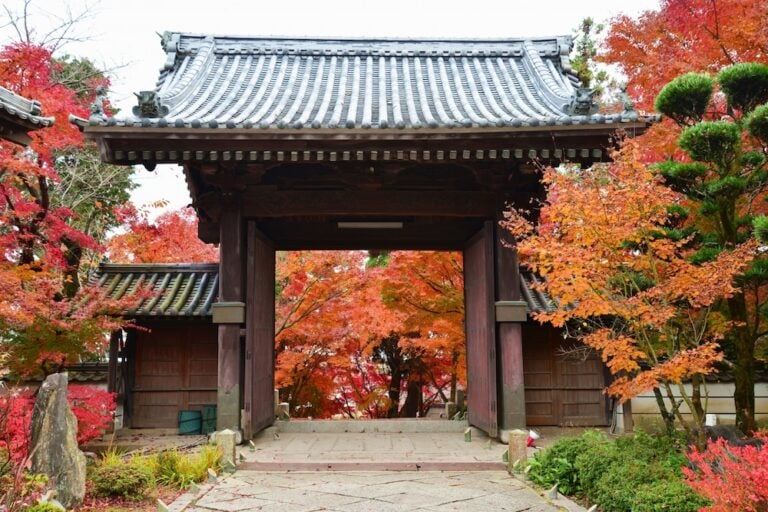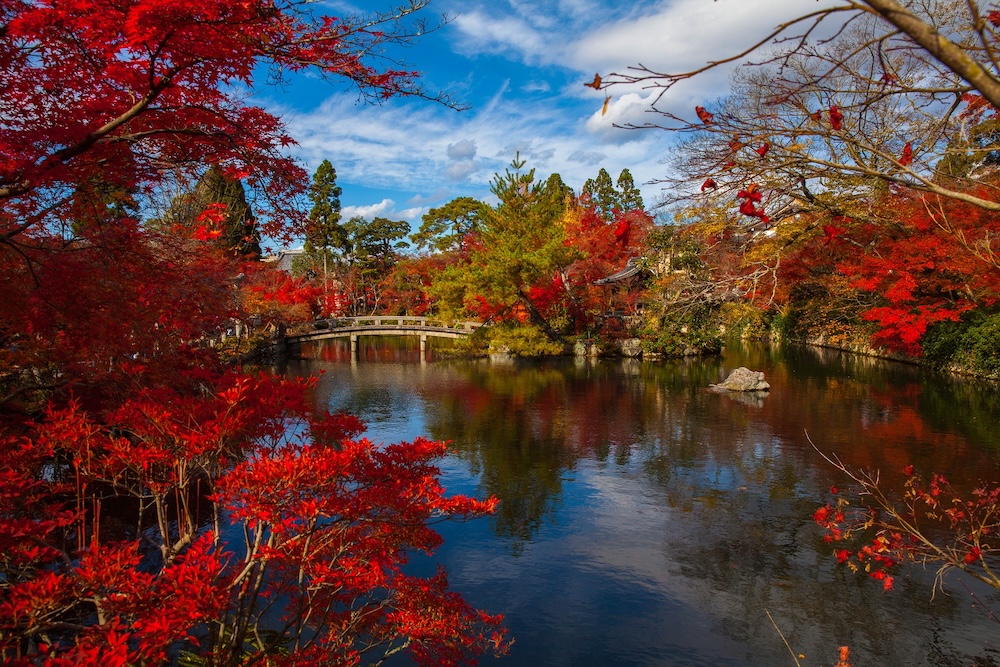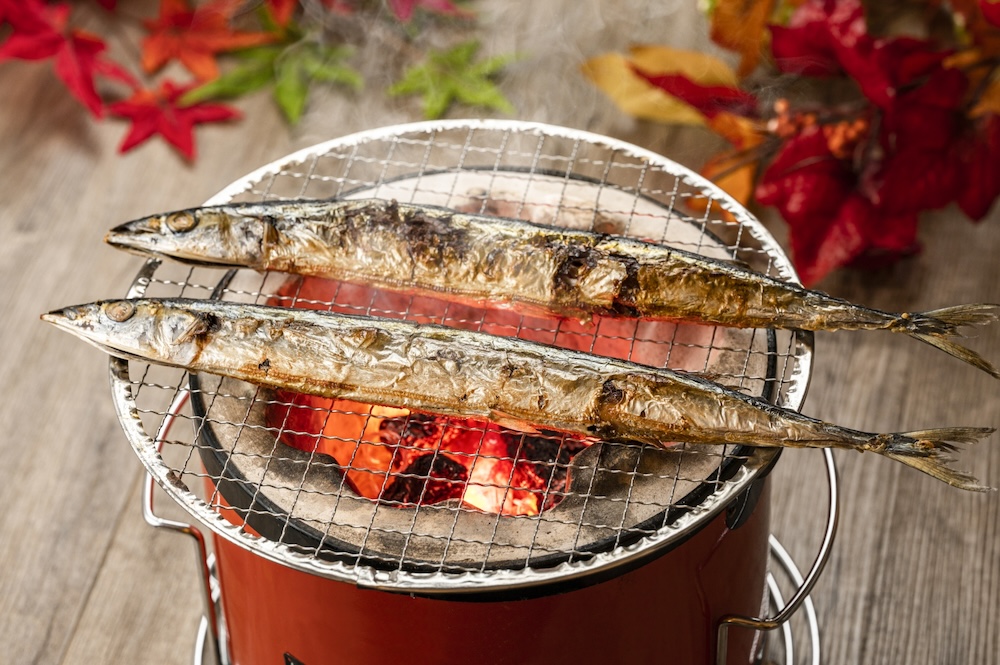
Autumn is one of the best seasons in Japan, not least because it’s the end of the stifling summer humidity. Though the summer heat lingers well into September in most places in the country, the temperature becomes pleasantly cool as it enters October. Autumn in Japan signifies a drastic change in the landscape as the bright greens of summer fade and the leaves begin to change color making it an enormously popular time for both visitors to Japan and for people travelling domestically. Many delicious foods come into season and it’s the perfect time to enjoy the outdoors.
In this article, we look at some of the best things about Japan in Autumn including seasonal foods and things to do.

Autumn Leaves viewing
By far the most popular activity in Japan is viewing the fall foliage. In Japanese, the autumn foliage is called 紅葉 and the act of viewing them is sometimes referred to as 紅葉狩り. Parts of Japan are completely transformed during the autumn months and Japan’s plentiful mountains are covered with cascades of red, gold and amber leaves making for some spectacular scenery. The best times to see this varies throughout the country ranging from early October through to December depending on where you are. Some areas, such as southern Kyushu, only have a very short window during which to see the changing leaves.
Just as with the cherry blossom season, there are many famous spots throughout Japan for viewing the autumn foliage. Kyoto is especially famous during this time of year with places like Kiyomizudera and Tofukuji temples drawing huge crowds during this time. Closer to Tokyo, there are many great parks for seeing autumn foliage including Shinjuku Gyouen National Garden. For more mountainous terrain, there are many places throughout regional Japan as well as Mt Takao which is only about an hour away from central Tokyo.

Autumn Foods
Just as revered as autumn leaves in Japan are the many foods that come into season in autumn. Being the main harvest season, this is when rice is harvested and the first harvest of rice is what’s called shinmai rice (or new rice). This newly harvested rice is said to taste better than regular rice and is particularly glossy with a high water content.
Other foods that come into season in autumn include chestnuts and sweet potatoes. Aside from the actual produce, many snacks and drinks with chestnut and sweet potato flavors start appearing in shops and supermarkets. Pumpkin and persimmons are also in season and it’s not uncommon to see persimmons hanging on strings in people’s yards in order to dry them.
In terms of fish, the one most associated with the autumn season in Japan is the pacific saury which migrates into Japanese waters during fall. It’s a long silver fish, often eaten grilled and is an integral part of some famous autumn festivals throughout Japan including the Pacific Saury Festival in Meguro ward in Tokyo. Other fish considered in season during this time are salmon and sweetfish though their wider availability makes them not quite as synonymous with autumn as pacific saury.
There are also a few dishes that are typically eaten in Japan during the autumn months. Oden, a type of hotpot with ingredients stewed in dashi reappears in fall and is eaten all through the colder months. Grilled sweet potato, called yaki-imo, is also an autumn staple and you can often find yaki-imo vendors selling them from small carts on the street.

Autumn Festivals
Though autumn festivals aren’t as plentiful and famous as those held in summer, there are still quite a few very well-known festivals held throughout Japan. Let’s look at a few of the more famous ones.
Kishiwada Danjiri Festival (Osaka)
Danjiri festivals are held in many areas throughout Japan and involve pulling giant floats in the shape of shrines through the street. The Kishiwada Danjiri festival is held in early autumn in the city of Kishiwada in Osaka and is one of the most famous festivals of this type. Huge crowds pull ornate floats through the streets around Kishwada castle. The floats are massive, elaborately carved and make for a spectacular sight as they’re carried at high speeds.
Jidai Matsuri Kyoto
The Jidai Matsuri is one of Kyoto’s major festivals and takes place on October 22nd each year. This festival involves a parade that cover’s Japan’s history with thousands of participants in accurate period costumes forming a procession through the streets of Kyoto travelling to the Heian shrine. The procession includes people dressed as famous historical figures and is like watching the march of history before your eyes. This festival draws big crowds and is a big event on Kyoto’s festival calendar.
Asakusa Tori No Ichi
Tori No Ichi festivals are held at many shrines throughout Japan in October. This festival is specifically for prosperity and good luck. One of the more well-known of these is the Tori No Ichi festival held at the Otori shrine in Asakusa, Tokyo. This festival originated in the Edo period and many people still go to the shrine to pray for luck. There are hundreds of stalls near the shrine, decorated with thousands of good luck charms. The streets around the shrine are also filled with delicious food stalls.
Tsukimi
Not so much a singular festival as an event observed throughout Japan, Tsukimi is a moon viewing festival expressing thanks for the autumn harvest. It occurs in September each year in conjunction with the full moon. While different places throughout Japan hold different events to tie in with Tsukimi, it is most typically celebrated at home. Decorations made with pampas grass are displayed and people gather to eat tsukimi dango. Places where people view the moon are also sometimes decorated with offerings of autumn food including sweet potato and chestnuts.
Autumn is a widely celebrated season in Japan and for good reason. With the cooler weather providing relief from the summer heat, beautiful scenery and plenty of delicious food to eat, there’s plenty of things to enjoy.













